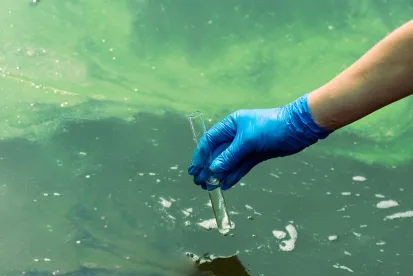The Biden Administration has made PFAS reduction a cornerstone of its environmental policy and with that goal in mind, the Environmental Protection Agency on June 15 announced new, lower Health Advisory Levels for four PFAS chemicals under its Safe Drinking Water Act (SDWA) authority. The Health Advisory Levels are non-regulatory and non-enforceable, and in the case of PFOA and PFOS interim in nature, but PFAS levels above these thresholds are now considered to be potentially harmful to human health, and they can be used in the development of drinking water regulations, influence state and local regulations, and certainly will shape public debate around the safety of these chemicals.
In conjunction with the new Health Advisory Levels, the EPA added five new PFAS chemicals to the list of chemicals it monitors and reports. The EPA also announced the availability of $1 billion for grants to fund PFAS remediation, including water quality testing, water treatment technology, training and general technical assistance. The $1 billion is part of a $10 billion package to address PFAS in drinking water and wastewater discharges included in the landmark federal Infrastructure Investment and Jobs Act.
The four chemicals in question for which EPA issued lower Health Advisory Levels are PFOA, PFOS, PFBS and the so-called GenX Chemicals (HFPO-DA and its ammonium salt). The new interim and final Heath Advisory Levels for these PFAS chemicals are as follows:
-
PFOA—0.004 parts per trillion (PPT) or four parts per quadrillion (ppq) - interim
-
PFOS—0.02 PPT or 20 PPQ - interim
-
PFBS—10 PPT – final
-
GenX Chemicals—2,000 PPT – final.
These levels are significantly stricter than those enacted in 2016 for PFOA and PFOS, which established an individual and combined Health Advisory Level of 70 PPT. As for GenX Chemicals or PFBS, the EPA had not established a Health Advisory Level prior to June 15, 2022. While there are many issues with EPA’s recent announcement, one that simply can’t be ignored is that the interim Heath Advisory Levels for PFOS and PFOA are simply below any available laboratory detection limit. And, to put the levels somewhat in perspective, one part per quadrillion is equivalent to one second of time in approximately 31.7 million years. It also should be pointed out that the interim advisory levels are based upon new toxicity data and draft analyses that remain under review by the Agency’s Science Advisory Board.
PFAS Chemicals
As for the five PFAS chemicals—PFOS, PFOA, PFNA, PFHxS and GenX Chemicals—that have been added to the EPA’s Regional Screening Levels table, these chemicals join PFBS as PFAS monitored under this program. While this monitoring program does not have any federal regulatory authority, many states also rely on this data for decision-making purposes.
These new Health Advisory Levels pose implications for industries that manufactured or used these chemicals at any time. Among other things, these levels will impact the public perception of these chemicals as well as influence state regulation of them. Both should be expected to lead to increases in governmental enforcement and regulation as well as private litigation.
The next significant step for PFAS regulation looks to be the EPA’s announcement of new National Primary Drinking Water Regulations (NPDWRs). These regulations likely will be announced this fall and take effect in Q3 2023. The recent announcement of new Health Advisory Levels is part of the NPDWR development process.






 />i
/>i

